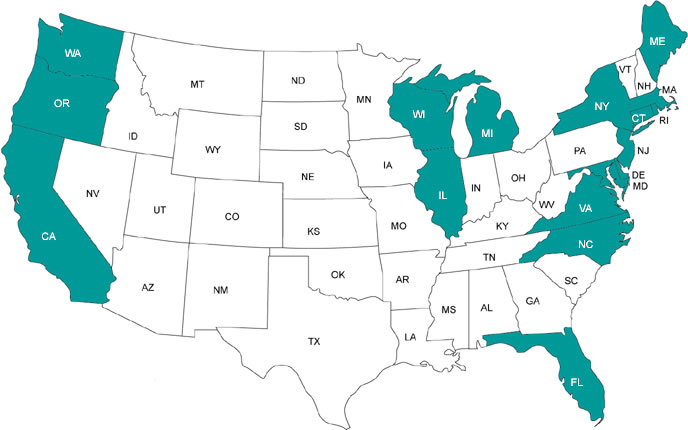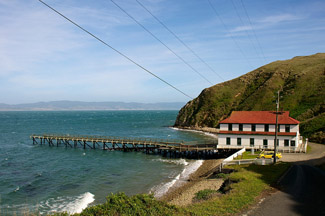Maritime Heritage Program
Home > Maritime Property Inventories > Life-Saving Stations
Historic Life-Saving Stations
Assisting shipwrecked mariners from shore-based stations was first undertaken in the United States by volunteers, beginning with the Massachusetts Humane Society in 1786. The Federal government began to provide provisions and funds for life saving operations in 1848, and the United States Lifesaving Service was created in 1878. Stations were organized into three categories: lifesaving, lifeboat, and houses of refuge. Beginning in 1915, the U.S. Coast Guard operated and maintained active stations. Today, many historic stations that are no longer active have been re-purposed for museum or commercial activities.
To learn more about the history of life-saving stations, visit the U.S. Life-Saving Service Heritage Association.
Click on a highlighted state on the map or the list below to find historic life-saving stations.
To find update information about specific life saving stations visit the U.S. Life-Saving Service Heritage Association Locate a Station Site webpage.
 |
 |
| Point Reyes Lifeboat Station. Photo by Don DeBold. Licensed via Creation Commons. |
California | Connecticut | Delaware | Florida | Illinois | Maine | Maryland | Massachusetts | Michigan | New Jersey | New York | North Carolina | Oregon | Rhode Island | Virginia | Washington | Wisconsin